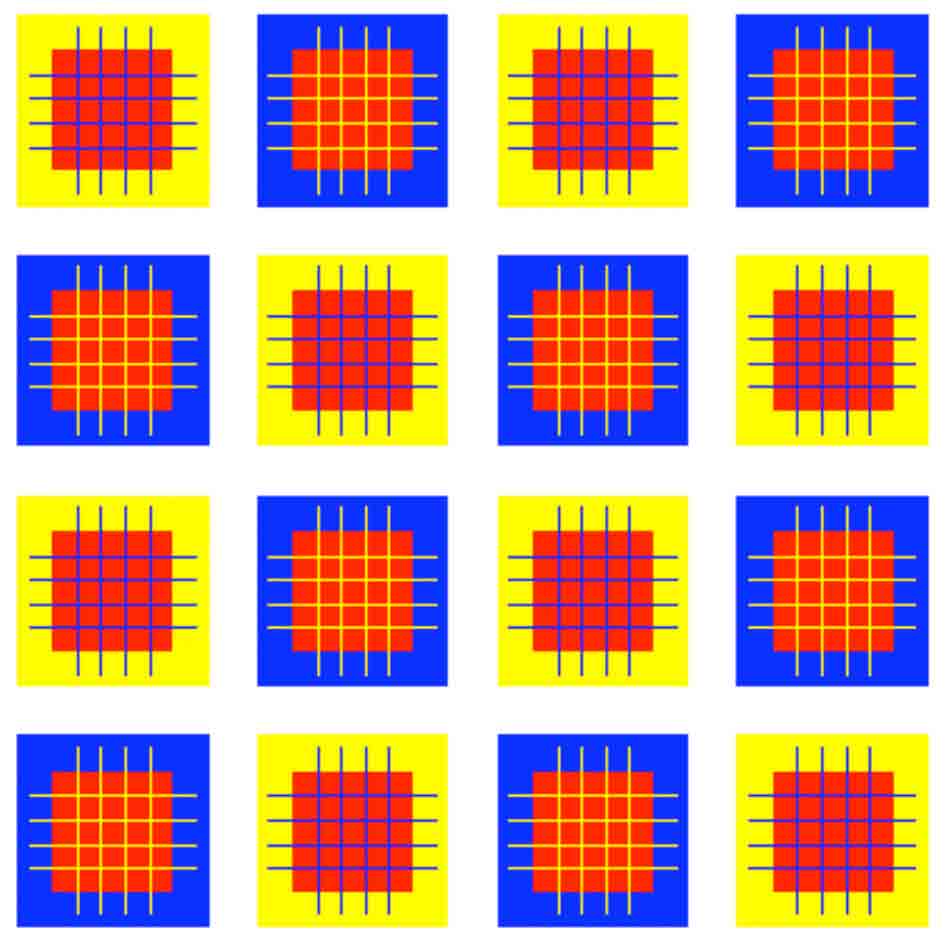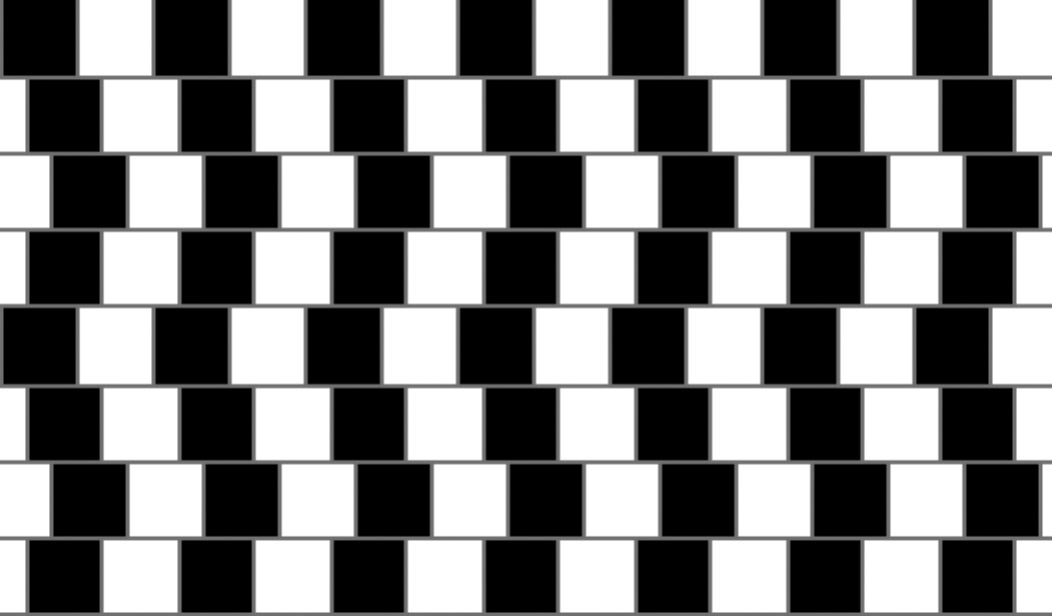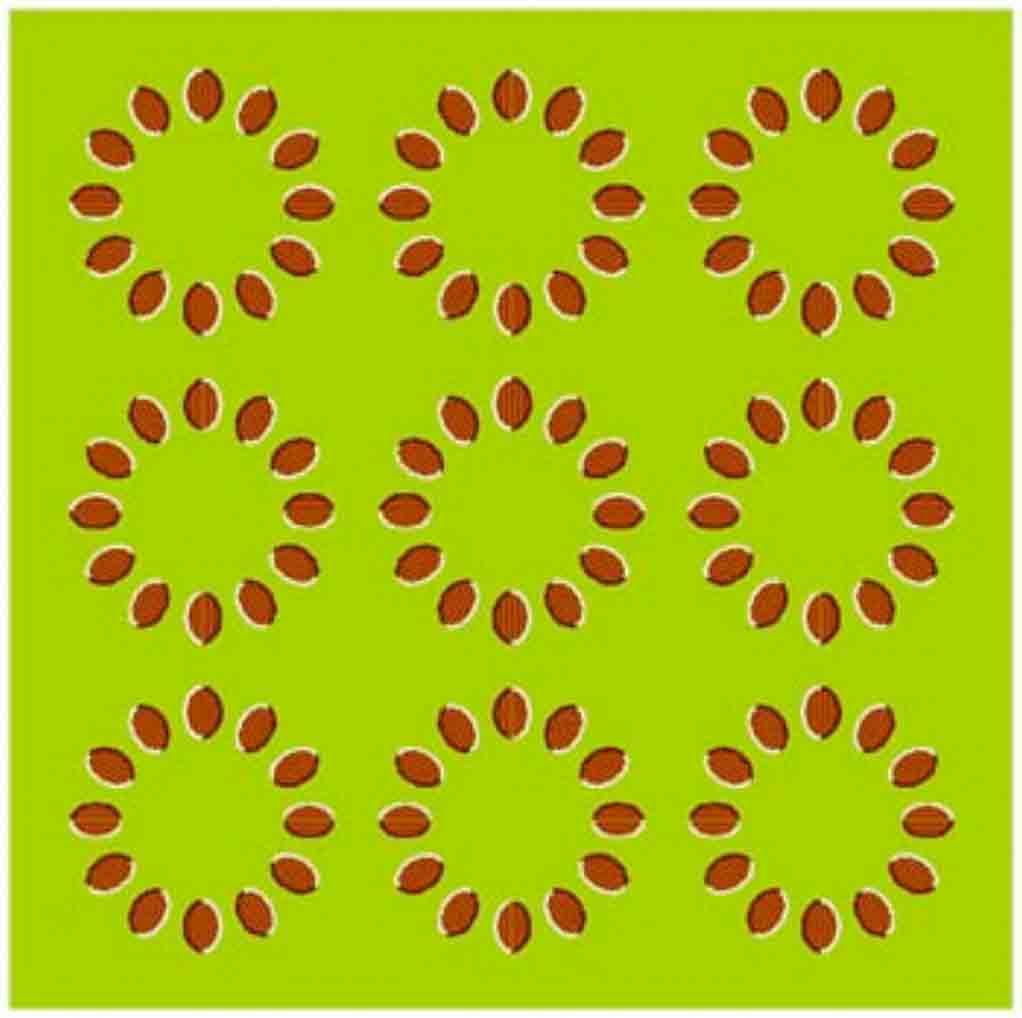Test your brain and mind with these nine classic optical Illusions
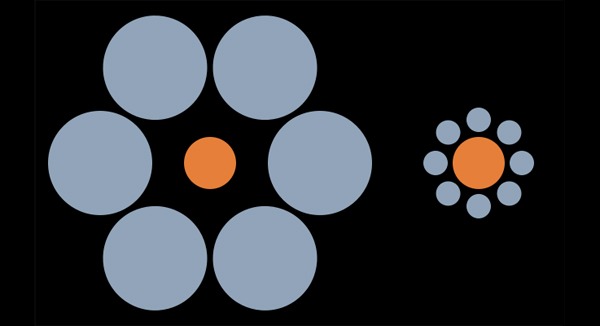 Are the two orange circles of the same size?
Are the two orange circles of the same size?
One way to learn more about our brains and minds is to look at how we can trick them–that is, to see how we react to brain teasers and visual illusions.
 The brain has two hemispheres, each divided into four lobes. Each lobe is (largely) responsible for different functions. For instance the frontal cortex (in yellow) is responsible for decision making and planning; the temporal lobe (in purple) for language and memory; the parietal lobe (in green) for spatial skills, and the occipital lobe (in red) is entirely devoted to vision: It is thus the place where visual illusions happen..
The brain has two hemispheres, each divided into four lobes. Each lobe is (largely) responsible for different functions. For instance the frontal cortex (in yellow) is responsible for decision making and planning; the temporal lobe (in purple) for language and memory; the parietal lobe (in green) for spatial skills, and the occipital lobe (in red) is entirely devoted to vision: It is thus the place where visual illusions happen..
Below are 9 optical illusions that combine fun and learning about our visual system. We know you know there is a trick since these are illusions… but don’t try to be smarter than your brain. Enjoy being surprised!
(You’ll find answers and explanations at the end of the article)
—
1. Are the squares inside the blue and yellow squares all the same color?
.
2. Are the horizontal lines straight or crooked?
.
3. Are the circles static or moving?
.
4. How many legs does this elephant have?
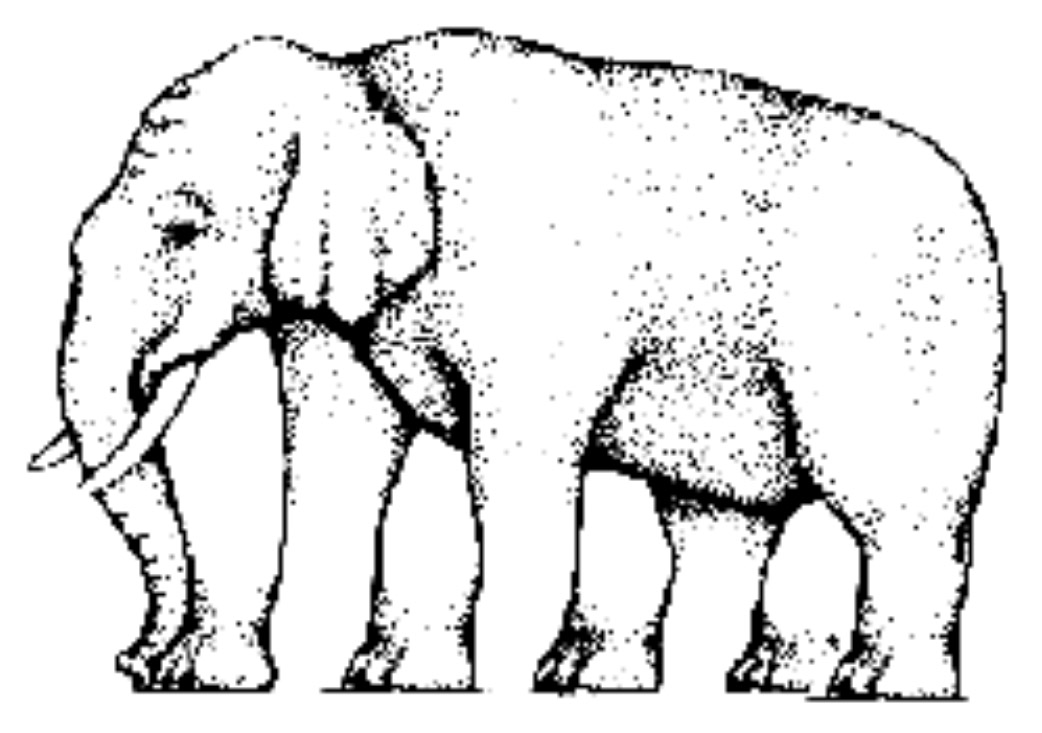
5. Are the two orange circles of the same size?
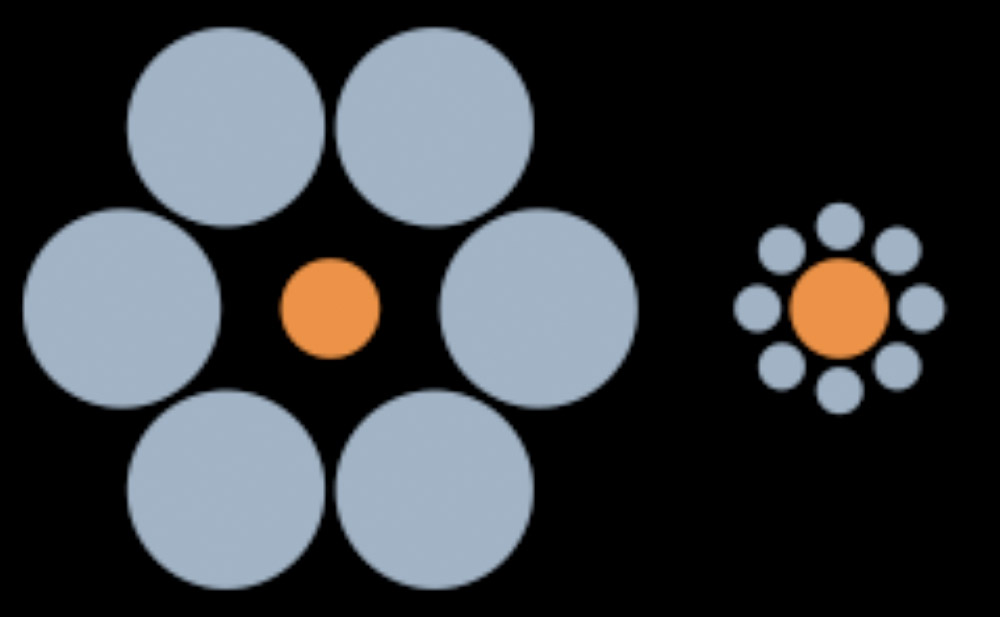
.
6. Are the two horizontal lines of the same length?
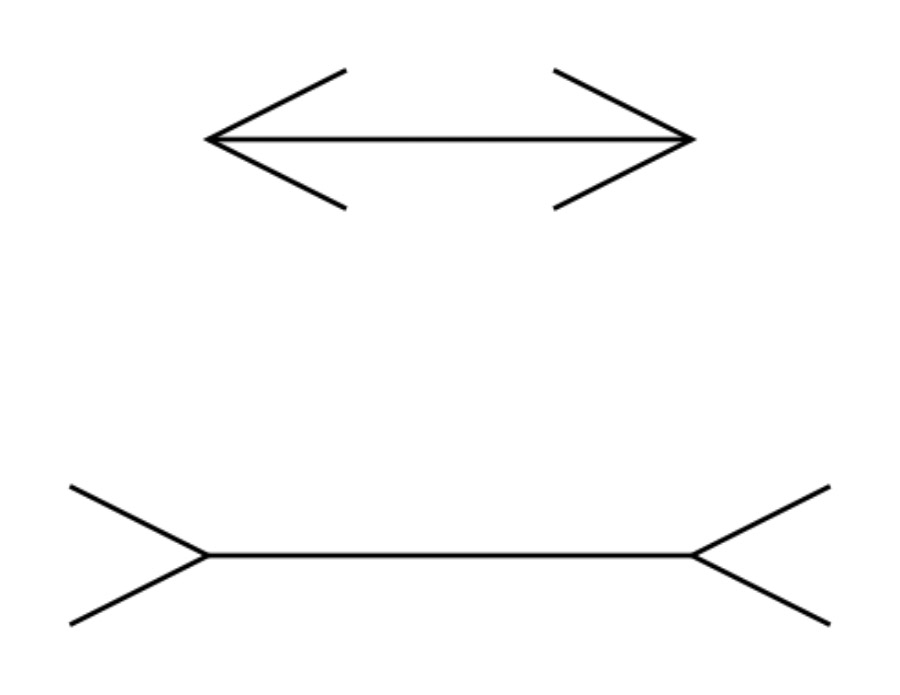
.
7. Do you see gray dots at the intersections of the white lines?

.
8. Does Lincoln’s face look normal?
.
9. Where is the baby?
.
ANSWERS AND EXPLANATIONS
Contrast your answers with the ones below, and learn about what was going on in your brain and mind while you experienced each of these classic optical illusions.
1. Bezold effect
The smaller squares inside the blue and yellow squares are all the same color. They seem different (magenta and orange) because a color is perceived differently depending on its relation to adjacent colors (here blue or yellow depending on the outer square)..
2. Café Wall Illusion
The horizontal lines are straight, even though they do not seem straight. In this illusion, the vertical zigzag patterns disrupt our horizontal perception.
3. Illusory Motion
The circles do appear to be moving even though they are static. This is due to the cognitive effects of interacting color contrasts and shape position.
4. How many legs does this elephant have?
Tricky, isn’t it?! This picture is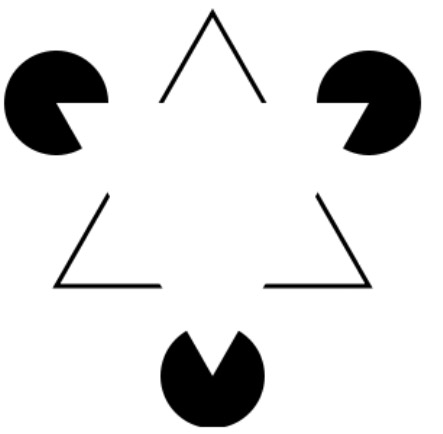 an impossible picture that also contains some subjective contours, such as the Kanizsa Triangle–A white triangle (pointing down) can be seen in this figure even though no triangle is actually drawn. This effect is known as a subjective or illusory contour. The contour of the triangle is created by the shapes around it.
an impossible picture that also contains some subjective contours, such as the Kanizsa Triangle–A white triangle (pointing down) can be seen in this figure even though no triangle is actually drawn. This effect is known as a subjective or illusory contour. The contour of the triangle is created by the shapes around it.
.
5. The Ebbinghaus Illusion
The two orange circles are exactly the same size,even though the one on the left seems smaller. This size distortion may be caused by the size of the surrounding circles or by their distance to the center circle.
6. The Mueller-Lyer Illusion
The two horizontal lines are of the same length, even though the one at the bottom seems longer. As you know, the visual angle gets smaller with distance, so the brain automatically perceives objects at farther distances to be bigger.
In general, lines that have inward flaps, such as corner of a building, are relatively the nearest points of the overall object. Similarly, lines with outward flaps are found at the longer distance, as the farthest corner of a room. So in the Mueller-Lyer illusion, the brain perceives the line with outward flaps to be at a farther point as compared to the line with inward flaps. Consequently, the brain perceives the line with outward flaps to be longer.
.
7. Hermann grid illusion
There are not gray dots in this grid. However “ghostlike” gray blobs are perceived at the intersections of the white lines. The gray dots disappear when looking directly at an intersection. This illusion can be explained by a neural process happening in the visual system called lateral inhibition (the capacity of an active neuron to reduce the activity of its neighbors).
.
8. Does Lincoln’s face look normal?
It se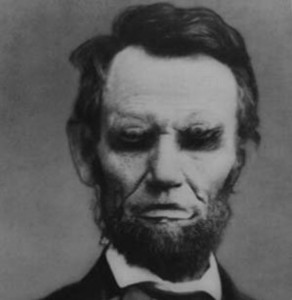 ems normal but now, look at it upright: Lincoln’s eyes do not look quite right!
ems normal but now, look at it upright: Lincoln’s eyes do not look quite right!
Some neurons in the brain seem to specialize in processing faces. And faces are usually seen upright. When presented upside down, the brain no longer recognizes a picture of a face as a face but rather as an object — neurons processing objects are different from those processing faces and not as specialized in face recognition. As a consequence, they (we) do not respond to face distortions as well. 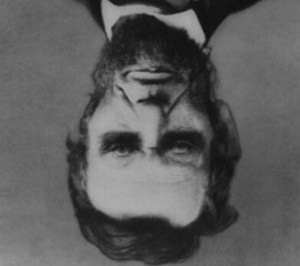 This explains why we miss the weird eyes when the face is inverted..
This explains why we miss the weird eyes when the face is inverted..
This is how the original image looked like:
9. Where is the baby?
Another great example of an illusory contour. The baby’s head is on the left, the baby’s feet are against the trunk of the tree on the right..
–> To keep learning about your brain and mind, check out these Top 25 Brain Teasers, Games and Illusions, for Teens and Adults of Any Age.

